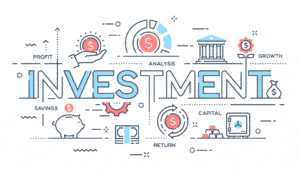Fixed Income Vehicles
Time and time again people talk about investors wanting safety, a rate of return and a sense of liquidity; but it’s well known that all three don’t coincide and no single asset offers this. A reasonable rate of return is typically between 6% and 8%, and investors have to decide how much risk they want in order to obtain this return. One such option for this would be through bonds or notes.
When thinking of bonds, we often think of lending and the primary points of lending include the cost, the interest rate, the terms, the time horizon to repay the loan, and what credit risks are involved. There are three types of bonds: treasury, municipalities and corporate bonds.
Treasury bonds are government held and are considered to be the only riskless security due to the tax power of the people. Although these have little to no risk, their rate of return is one of the lowest available.
Municipalities are traditionally tax-free bonds. This means that lower returns can be seen as more beneficial depending on what tax bracket the investor is in. Due to the fact that taxes are not factored in, a 4% interest rate may pay out the same as a 5.5% taxed investment.
Corporate bonds are a form of debt financing for larger companies. Among the various fixed income vehicles, a fixed income bond (bank note) is an alternative option. These bank notes are linked to the performance of specific indices and the payout is a yearly percentage paid out quarterly for the length of the note. At the end the investor gets their principal back.
Get in Touch
An investment in knowledge pays the best interest.

The 5 Phases of the Chapters of Retirement
The five phases of life after 50 & the considerations that accompany them.

The Investment Risk You May Not Know About
What can you do to allay this risk?

Beware of These Midlife Money Errors
If you are between 40 & 60, beware of these financial blunders & assumptions.

The Netzel News
In this issue: Tax deductions you don’t want to overlook. Fed makes statement on interest rate hikes for 2019. Wall Street awaits a wave of IPO action. More retirees are working after 70. How to adjust to a “surprise” retirement.

Six Most Overlooked Tax Deductions
Six overlooked tax deductions to help you manage your tax bill.

Building a Bond Ladder
One approach to creating a bond portfolio.

How Women Can Narrow the Retirement Savings Gap
Steps toward saving more & revitalizing your retirement strategy.

A List of IRA Withdrawals That Escape the 10% Penalty
The list of these options has grown.

Is America Prepared to Retire?
A look at some ways to get ready.

Long-Term Investing Truths
Key lessons for retirement savers.

The Anatomy of an Index
The S&P 500 represents a large portion of the value of the U.S. equity market.

February Economic Update
In this month’s recap: equities rally here and around the world, economic fundamentals look solid, the pace of home sales slows, and oil surges.

